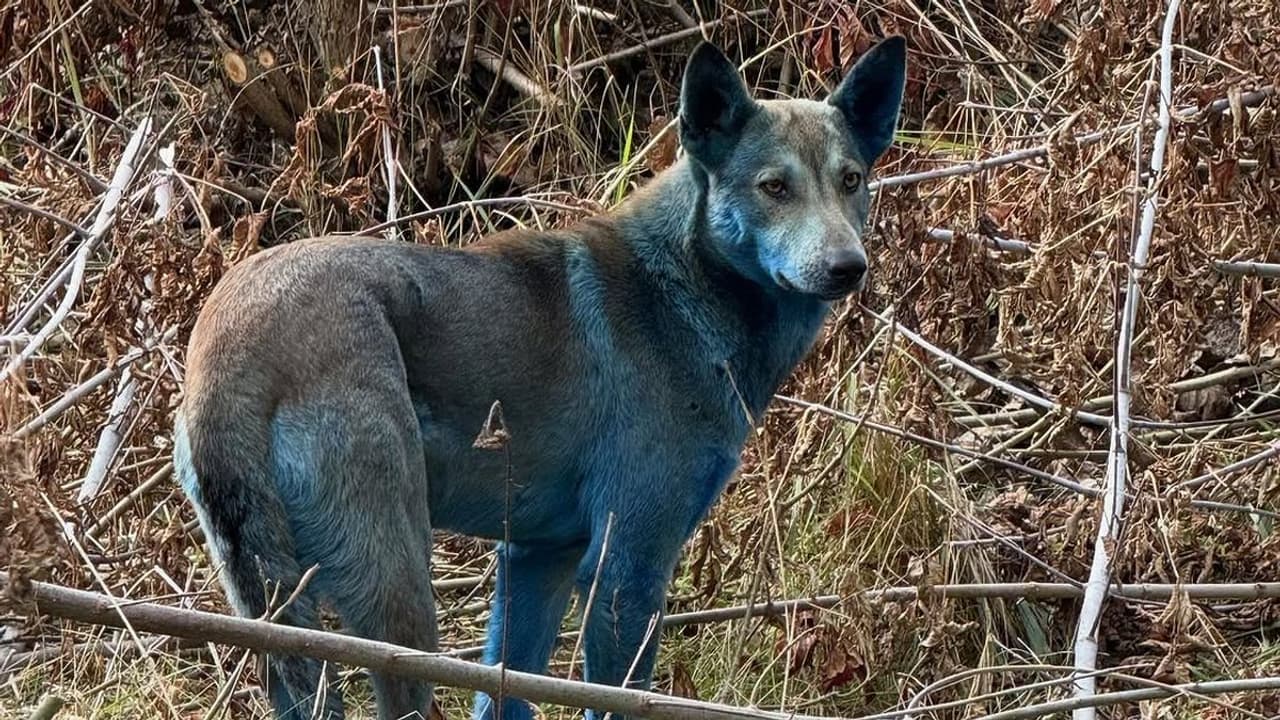Caretakers at Chernobyl have spotted dogs with bright blue fur roaming the exclusion zone. Scientists suspect chemical exposure, as these resilient animals show genetic adaptations to radiation and toxins decades after the 1986 nuclear disaster.
A puzzling new discovery has emerged from the ruins of Chernobyl — a group of stray dogs with bright blue fur. Caretakers working with the Dogs of Chernobyl organization, which has been caring for hundreds of animals in the area since 2017, recently noticed the unusual coloring among several dogs living near the nuclear exclusion zone.
Caretakers Stunned by Dogs’ Sudden Blue Coloring
The group shared footage of the blue-coated dogs on social media, writing, “They were not blue last week. We do not know the reason and are attempting to catch them so we can find out what is happening.” While the animals appeared healthy and energetic, the caretakers suspect the color might have come from exposure to chemicals or other environmental contaminants.
Most of the dogs roaming the 18-square-mile exclusion zone are descendants of pets left behind when residents fled the area following the 1986 nuclear disaster — one of the worst in human history. The Dogs of Chernobyl project, part of the non-profit Clean Futures Fund, provides food, vaccinations, and sterilization to around 700 stray dogs each year, helping them survive in one of the world’s most toxic environments.
Social Media Speculation and Scientific Interest
Online speculation about the blue fur has been rampant, with many suggesting that it could be the result of chemical contamination rather than radiation exposure. “That blue-tinged fur is likely from external chemicals that can be washed off,” wrote one commenter on TikTok, while others expressed shock that these animals remain healthy enough to breed after decades in the contaminated zone.
Despite living amid lingering radiation, the Chernobyl dogs have shown extraordinary resilience. In 2024, a study by Columbia University’s Norman J. Kleiman revealed that these animals may have genetically adapted to survive in such harsh conditions. Blood samples from 116 dogs showed two genetically distinct populations with unique DNA traits not seen in other dog groups. These adaptations appear to protect them from radiation, heavy metals, and pollution — a kind of evolutionary “superpower” born from catastrophe.
